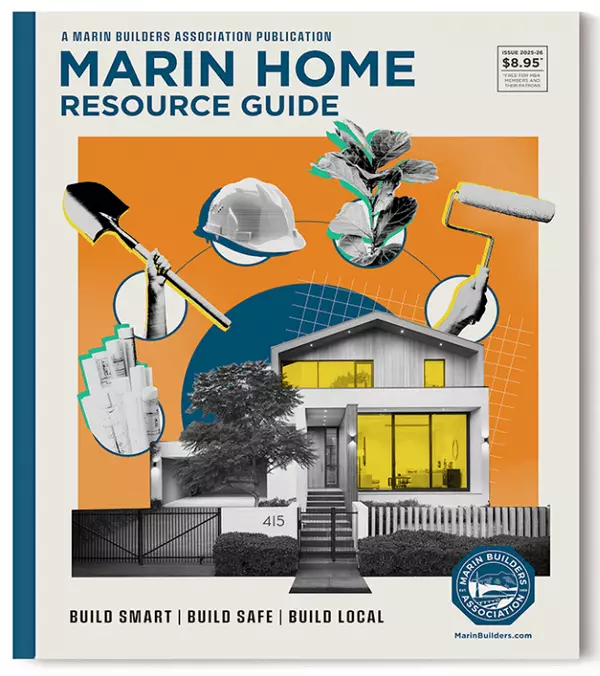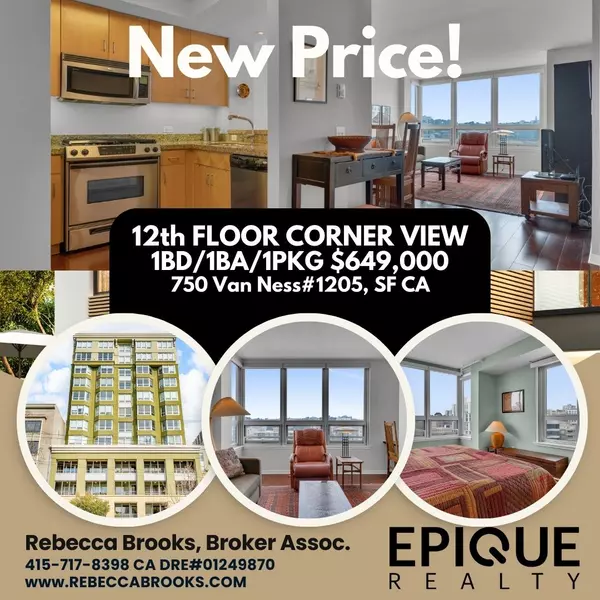EPIQUE NEWS LIVE

Marin Home Resource Guide 2025-2026 - courtesy of the MBA
Every year the Marin County Builder's Association publishes this helpful Home Resource Guide which is full of helpful information and links to local business service providers. What do you need - movers? painters? contractors? fencers? landscapers? engineers? Chances are you'll find the Marin County

Really Cool Video of San Francisco
Hi! I'm only sharing this video link because I love how it captures all of the San Francisco skyline views. Enjoy! https://www.facebook.com/17841464918338340/videos/2130170664102702/?mibextid=wwXIfr San Francisco, with a population of around is a city of iconic landmarks and rich history. It is the

Price Reduced! Urban View 1BD/1BA Condo Asking $625,000
Click Here for a Quick Video of 750 Van Ness #1205, San Francisco CA 94102 Here is the urban residence that you’ve been waiting for! Welcome to #1205, a rare high-floor Symphony Towers one bedroom condominium. This bright corner unit is perfect for full-time living, a second residence or even a pied

12 Reasons to Buy Your Own Office Space Instead of Renting
If you are a medical, dental or health practitioner and you are renting your business space, you may want to consider the benefits of buying your own office. Why? What are the pros and cons? What are some of the factors to consider when making this decision? Here are several reasons why you might op

New Year, New Listing! Maybe A New Office For You?!?
Turnkey Office Condo in Petaluma’s Premier Business Park Elevate your consultation practice or medical/dental business in this attractive medical office condo located in the renowned Park Place Medical Center. Adjacent to Petaluma Valley Hospital and Deer Creek Village Shopping Center, this locatio

Just Sold! 1783 Quesada St., San Francisco - Represented Seller
Just Sold in San Francisco! Another one of my favorite past clients, he purchased this in 2010 as an REO property for under $300K....When it became time to sell, he reached out to me and we facilitated an off-market sale to one of his neighbors. Everything went very smoothly! Thanks to my 25+ years

Just Sold! Investment Opportunity in Sonoma, CA
Rare Sonoma opportunity! Looking for an urban farm? Here you go! The potential is amazing. Just south of the town of Sonoma, 3+/- useable acres with two separate ranch style homes, plus cottage and bonus outbuildings such as: detached garage, huge barn, storage sheds, stalls for livestock, sheds, pa

Just Sold! Residential Lot in Sonoma, CA
This one took awhile as it was a complicated parcel but we finally got it closed! THANK YOU to my wonderful repeat client who was a joy to work with - again. And also THANK YOU to #focusedaerial for the great photos and marketing tools. If you are a Seller or a Buyer of vacant land parcels in Sonoma

Take The Emotion Out of Buying a Home
Take the Emotion Out of Buying a Home You may feel the urge to buy a house, but is it the right decision? There can be advantages and disadvantages to homeownership, but when it comes to such large financial transactions, the best thing you can do is take the emotion out of your decision. Consider t

6 Strategies to Save on Home Insurance Premiums in California
From wildfires to floods, the past few years have brought a historic number of devastating climate and weather events to the United States, and in California especially. In 2023 alone, there were 28 individual weather-related disasters that caused at least $1 billion in damages each throughout the U

San Francisco's Hidden Gems: Conversion Lofts in Historic Buildings
San Francisco's Hidden Gems: Five Reasons why condos in conversion loft buildings are considered special and unique! A conversion loft space often carries a unique charm and character that can be more appealing to some individuals compared to a building that was purposefully built to be lofts. Here

Rare Sonoma Residential Lot For Sale - With Plans!
1430 Felder Road, Sonoma CA 95476 Lot Size: .79 of an acre Rare Vacant Lot in Desirable Sonoma Location Build your new home overlooking the vineyard. Just under 1 acre, this is a very rare residential lot in a must-see setting in southwest Sonoma, very close to Sonoma Square and other amenities. Tra

Stunning NY-Style Loft in the Heart of San Francisco
$995,000 1 Bed | 1 Bath | 989 SqFt 151 Alice B. Toklas PL, San Francisco, CA 94109 Active Welcome to condo unit #703, a hip NY-style conversion loft in the iconic Marquee building. Located at 151 Alice B. Toklas PL, San Francisco, CA 94109, this stylish loft offers an urban lifestyle like no other.

